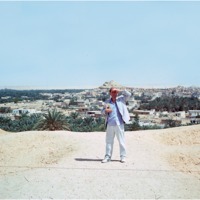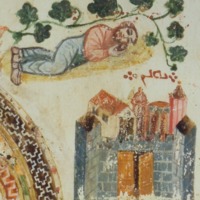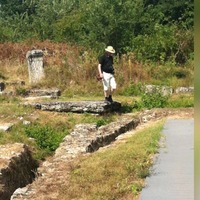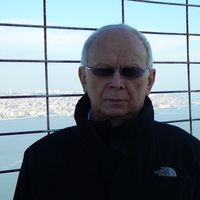Papers by Katharina Suter-Meyer
This chapter deals with the transformation process sparked by the commenting on an ancient geogra... more This chapter deals with the transformation process sparked by the commenting on an ancient geography of early modern humanist scholar. This is shown through the example of the "Rhine-lemma" in a commentary composed by the Swiss reformers and humanist Joachim Vadianus on the Roman geographer Pomponius Mela. In his description, Vadianus narrows down the "description of the Rhine "to the Alpine Rhine and the region of Lake Constance, where his own roots lie. He chooses to neglect the fact that the Rhine functions as a border between the Swiss Confederation, France and Germany. In his role as a commentator, Vadianus claims for himself authoritative knowledge consisting of empirical observations made by an eye-witness. The original text of the chapter is in German and English. Keywords: Joachim Vadianus; Pomponius Mela; Rhine-lemma; Swiss Confederation
De Gruyter eBooks, Oct 10, 2017

Transformations of the Classics via Early Modern Commentaries, 2014
This chapter deals with the transformation process sparked by the commenting on an ancient geogra... more This chapter deals with the transformation process sparked by the commenting on an ancient geography of early modern humanist scholar. This is shown through the example of the "Rhine-lemma" in a commentary composed by the Swiss reformers and humanist Joachim Vadianus on the Roman geographer Pomponius Mela. In his description, Vadianus narrows down the "description of the Rhine "to the Alpine Rhine and the region of Lake Constance, where his own roots lie. He chooses to neglect the fact that the Rhine functions as a border between the Swiss Confederation, France and Germany. In his role as a commentator, Vadianus claims for himself authoritative knowledge consisting of empirical observations made by an eye-witness. The original text of the chapter is in German and English. Keywords: Joachim Vadianus; Pomponius Mela; Rhine-lemma; Swiss Confederation

(1698-1756) und dessen Frau Helena (1706-1779), geborene Birr, zur Welt.2 Sein Familienzweig gehö... more (1698-1756) und dessen Frau Helena (1706-1779), geborene Birr, zur Welt.2 Sein Familienzweig gehört der Theodor-Linie an, die auf den Sohn Theodor (1549-1623) des «Stammvaters» Christoph zurückgeht. Johann Rudolfs Grossvater Bonifacius (1656-1708) war Pfarrer in Riehen, sein Urgrossvater Christoph (1631-1705) Oberstzunftmeister in Basel. Bereits 1756 stirbt Johann Rudolfs Vater. Danach nimmt ihn sein Onkel Anton Birr (1693-1762), Professor an der Universität Basel, in seinem Haus auf, lehrt ihn Lateinisch und Griechisch und unterstützt den erst Achtzehnjährigen bei der Vollendung des bereits begonnenen Theologiestudiums. Burckhardt wächst zu einer Zeit auf, als Basel ca. 15 000 Einwohner hat, die noch innerhalb der Stadtmauern leben. Das strenge Staatskirchenwesen, das in Basel herrscht, hat zur Folge, dass die Teilnahme an Gottesdiensten und dem Abendmahl theoretisch obligatorisch ist. Jedes Jahr werden die Bürger auf die Basler und die Geistlichen auf die Helvetische Konfession verpflichtet. Der «convenais pastorum» wacht übet die reine Lehre. Religiöse Versammlungen in Privathäusern werden stark eingeschränkt oder gar verboten. Wer die reformierte Kirche angreift, macht sich strafbar, wird je nach Schwere des Falles inhaftiert, ausgepeitscht, oder des Landes verwiesen. Während des Theologiestudiums begegnet Burckhardt als junger Student Johann Balthasar Burckhardt (1710-1792), Jakob Christoph Beck (1711-1785) und Emanuel Ryhiner (1695-1764), die wichtige Vorbilder für ihn werden. Sein beruflicher Werdegang wird aber in erster Linie von Pfarrer Hieronymus Annoni (1697-1770) beeinflusst, einem Pietisten, zu dem et als Gymnasiast nach Muttenz in die Messe gepilgert ist.3 Bei diesem Buss-und Erweckungsprediger tritt er nach dem erfolgreichen Abschluss seines Studiums 1762 ein Vikariat an. Schon kutz darauf verlobt er sich mit dessen Stiefgrosstochter Esther de Lachenal.4 Da die Chancen auf eine Pfarrerstelle in der Schweiz sehr gering sind, übernimmt Johann Rudolf Burckhardt 1764 die deutsche Die knappe Schilderung des Lebenslaufs stützt sich vor allem auf Abel Th. Burckhardr: Johann Rudolf Burckhardr, eine Pfarrergestalt aus dem alten Basel, seine Frömmigkeit und sein Wirken, sein Familienleben und die religiösen und kirchlichen Verhältnisse seiner Zeit, Basel 1944, S. 8f. Ernsr Staehelin: Die Christentumsgesellschaft in der Zeit der Aufklärung und der beginnenden Erweckung. Texte aus Briefen, Prorokollen und Publikationen, Basel 1970, S. 23. Burckhardt (wieAnm. 2), S. 18.











Uploads
Papers by Katharina Suter-Meyer